

Paolo ontalan




P e r s p e c t i v e
Visionaries Shaping the Future of Business
Theglobalbusinessenvironmentcontinuestoevolverapidly,shaped
bytechnology,shiftingsocietalexpectations,andanurgentcallfor sustainabilityandinclusivity.Intimesofconstanttransformation,it isthestrengthandclarityofleadershipthatdefineshowindustriesadaptand thrive.Acrossindustries,organizationsarelookingtovisionaryindividuals whocannavigateuncertainty,embraceinnovation,andleadwithpurpose. Theseleadersarenotonlyadaptingtochangebutarealsodrivingit, reshapingthefutureofbusinessthroughbolddecisionsandforward-thinking strategies.
EnterpriseReviewinitsrecenteditiontitledasMostImpactfulLeaders ShapingtheFutureofBusinessin2025highlightsthemostimpactful leaderswhoarenotjustrespondingtochangebutactivelyshapingthefuture ofbusiness. Theseindividualscomefromawiderangeofsectors,including technology,finance,healthcare,energy,andconsumergoods.Whatunites themisasharedcommitmenttoinnovation,ethicalleadership,andlong-
termvaluecreation.Theyarebuildingorganizationsthatprioritizeboth profitandpurpose,provingthatbusinesscanbeaforceforgoodwhile remainingcompetitiveinacomplexmarketplace.Theiractionsarenot onlydrivingresultsbutalsoinfluencingthedirectionofglobalbusiness strategy
Theirstoriesserveasapowerfulreminderthatleadershiptodaygoes beyondtraditionalmetricsofsuccess.Itinvolvescourage,adaptability, andaclearsenseofresponsibilitytowardemployees,communities,and theplanet.Theindividualsfeaturedexemplifythesequalities,setting newstandardsforwhatitmeanstoleadwithimpact.Asthebusiness worldcontinuestoevolve,theirvisionandactionswillplayacritical roleinshapingmoreresilient,inclusive,andforward-thinking enterprises. Theseleadersofferpowerfulexamplesofhowthoughtful leadershipcancreatelastingimpact,shapeindustries,andcontribute meaningfullytosociety.
Haveagreatreadahead!
Bill Limbert
C o v e r S t o r y
Paolo ontalan
Architecting Operational Excellence while Building Systems and Empowering People
16
22
A r t i c l e s
Surging Forward
Top Business Innovation Trends Shaping the Future
From Observation to Action
The Importance of Analytical
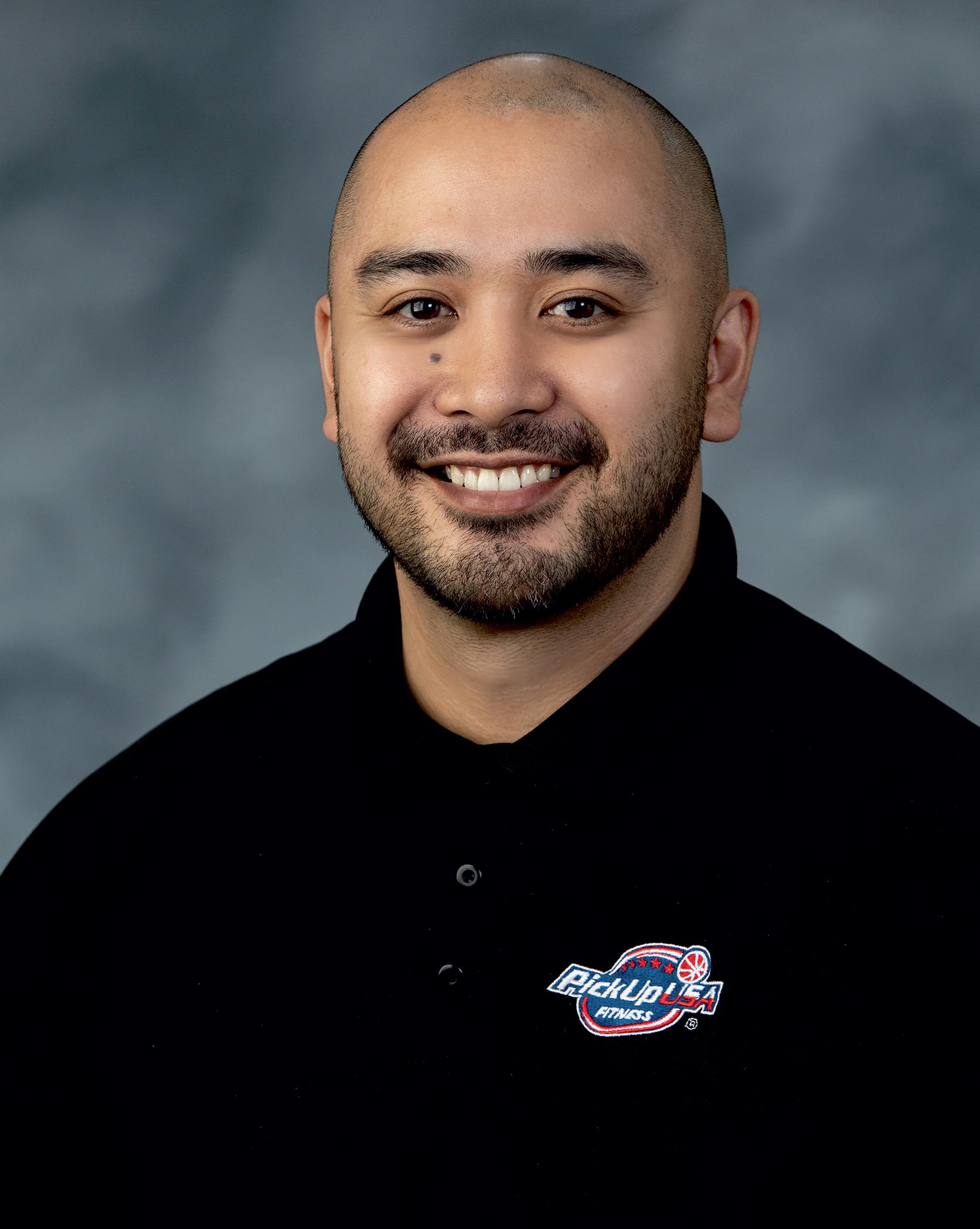

Merry
D' Souza Editor-in-Chief


www.twitter.com/enterprisereview.com/ www.facebook.com/enterprisereview.com/
Managing Editor Bill Limbert
Assisting Editor Joe Lee CONTENT
WE ARE ALSO AVAILABLE ON
Visualizer Stewart Jonas
Art & Design Director Robin Clarck
Associate Designer Authur Watson DESIGN


Vice President Jil Kendal
Asst. Vice President Kevin Johnson
Asst. Manager Robert Hanson
Business Development Executive Thomas E. SALES
Email sales@enterprisereview.com For Subscription www.enterprisereviewmedia.com
Technical Head Andrea Jackson
Technical Specialist Mike Anderson
Technical Consultant Oliver Sutton TECHNICAL
SME-SMO
Research Analyst Wendy J.
SEO Lead Tasha L.
July, 2025
Copyright © 2025 enterprisereview, All rights reserved. The content and images used in this magazine should not be reproduced or transmitted in any form or by any means, electronic, mechanical, photocopying, recording or otherwise, without prior permission from enterprisereview Reprint rights remain solely with enterprisereview.
Brief CompanyName FeaturedPerson
AxelKloth
Founder&CEO
CeaserSiwale Co-Founder
EricGripentrog
ChiefExecutive Officer
KarlGorman
Founder&CEO
AbacusSemiconductor Corporation abacus-semi.com
TheCriticalMinerals Fund(TCMF) thecriticalmineralsfund.com
KirkmanGroup kirkmangroup.com
GLHCapital glhllc.net
LukaszJeziorski CEO
PlumResearch plumresearch.com
MatteoMuia CEO&Founder
NathanielSmith Founder
MuiaConsulting muiaconsulting.com
BlueNovaTechnology,LLC bluenovatechnology.com
AxelistheFounderandCEOofAbacusSemiconductor Corporation,leadingthedevelopmentofhigh-performance computingarchitecturesfordata-drivenindustries.
CeaseristheCo-FounderofTheCriticalMineralsFund (TCMF),guidingstrategicinvestmentsinvitalresourcesto supportglobalenergytransitionsandsustainablemineral sourcing.
EricistheCEOofKirkmanGroup,leadingthecompany’s growthandstrategyindeliveringhigh-qualitynutritional supplementsandhealthproducts.
KarlistheFounderandCEOofGLHCapital,specializingin financialinvestmentsandstrategicadvisorytoprovidegrowthfocusedcapitalsolutionsforchangingmarketneeds.
LukaszistheCEOofPlumResearch,adataanalyticsfirm enhancingaudiencemeasurementwithadvancedalgorithmsto helpmediacompaniesunderstandconsumerbehaviorand contentperformance.
MatteoistheCEOandFounderofMuiaConsulting,offering strategicsolutionstohelporganizationsimproveperformance, streamlineoperations,andachievesustainablegrowth.
NathanielistheFounderofBlueNovaTechnology,LLC, drivinginnovationinrenewableenergythroughsustainable technologiesandsmartsystems.
PaoloOntalan ChiefOperating Officer
RyanVictor ChiefRevenue Officer
PickUpUSAFitness pickupusafitness.com
Finxact finxact.com
PaoloistheChiefOperatingOfficeratPickUpUSAFitness, whereheoverseesdailyoperations,strategicplanning,and growthinitiativestoensureexceptionalservice.
RyanistheChiefRevenueOfficeratFinxact,leadingrevenue strategyandmarketgrowthtodriveadoptionofitsnext-gen corebankingplatform.
VinodSingh Co-founder
Concirrus concirrus.ai
VinodistheCo-founderofConcirrus,leadinginnovationin insurtechbyusingAIanddataanalyticstoimprove underwriting,riskassessment,andefficiencyincommercial insurance.
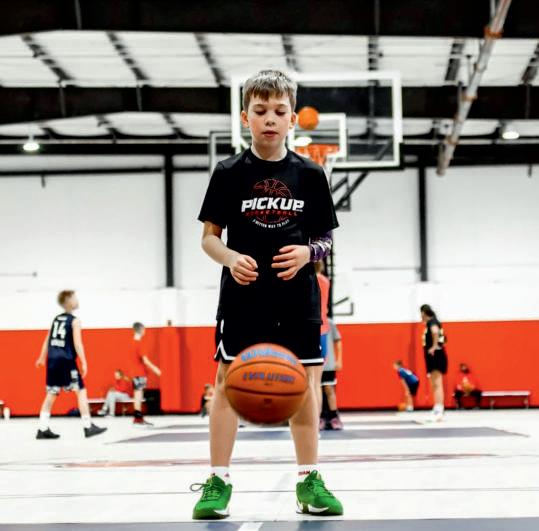


Paolo ontalan
Architecting Operational Excellence while Building Systems and Empowering People
Chief Opera�ng Officer
PickUp USA Fitness


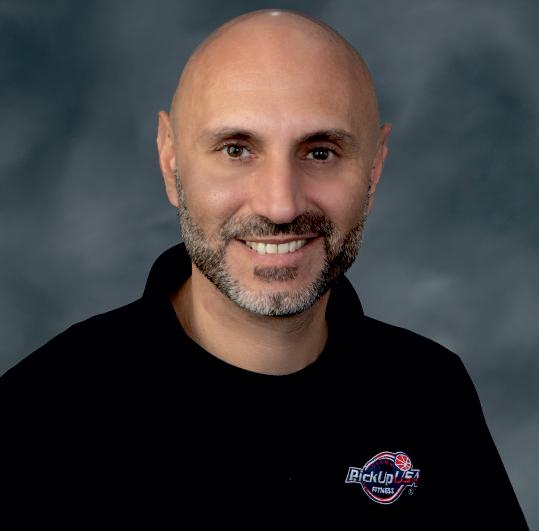
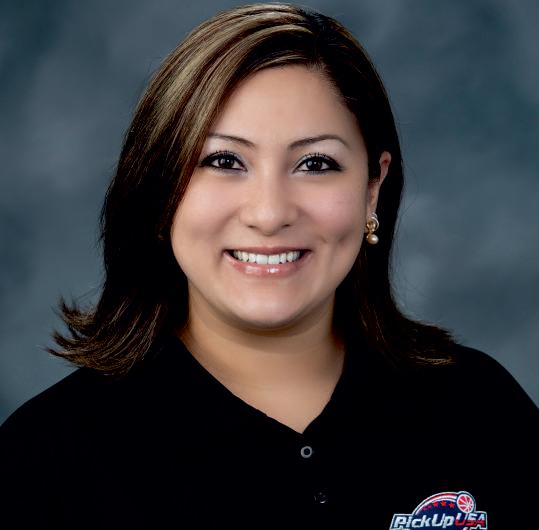

It is a world where ambition and delivery are never quite
clearly defined, where a people-system-transparency promisebyaleaderisthedifferencebetweenmediocrityand enduring triumph. Paolo Ontalan stands at the edge of excellence. His journey through the commercial tribulations of PickUp USA Fitness is a master class in how fixed leadershiponapermanentrespectforpeopleandprocesscan take an idea and scale it to a brand of national and global repute.
Building the Backbone: From One Club to a Replicable NationalSystem
When Paolo first walked into PickUp USA Fitness, he didn't merelyenvisionabasketball-themedgym Hesawinhismindan untapped possibility. While other individuals may have only fantasizedaboutcourts,leagues,andmemberships,Paolosawa businessmodelthatcouldbescaledwithspaceforoperational design—a framework that could accommodate franchisees, facilitatelocalteams,andofferasteady,high-levelexperience toeveryindividualwhocamethroughthedoor
"Iknewimmediately,"Paolosays,"thatwiththerightsystems,this wasn'tjustagym itcouldbeanationalkillerbrand."
Itwasn'tanaccidentthatcementedPaolo’sbelief.Histeaching andoperatingDNAhasbeenfrontandcenterinhisbusiness It'sa rareblendthatmadehimthego-toindividualforPickUpUSA's growth Herecognizedearlyonthat success would never be a matterofflash-in-the-panadvertising.Itwouldbetheability to replicate greatness club by club, franchisee by franchisee.

“Every day, I aim to make complex operations simple and clear for our teams.”
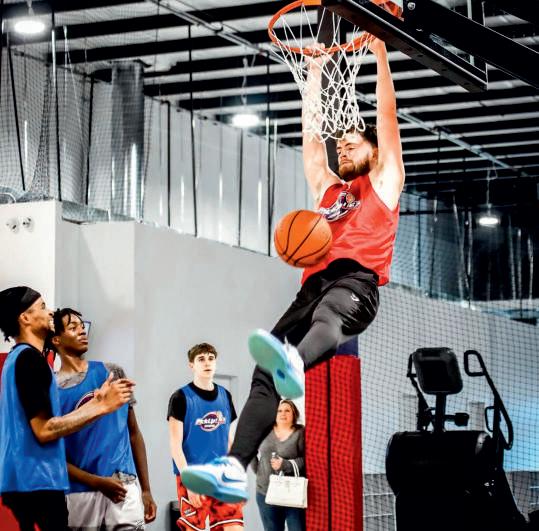
And now, PickUp USAFitness equates to quality, consistency, andpremiumbasketballexperience Underpinningthatword-ofmouth is Paolo's commitment to taking something humble, intriguing,andturningitintoareproducibleandscalablesystem.
OperationalDiscipline:TheScienceandArtofSystems
Whatdriveslong-termsuccessinfranchising,Paoloasks,andhe won'tapologize:"Systems,"hesaysflatly,"butsystemswon'twork withoutgreatpeople "
It'sthatconcurrentconvictionthathasfueledthebusinessmodel ofPickUpUSA.Paolo'spossesseditsincedayone.Hehasalways been focused on creating lean and streamlined processes that makefranchisees'livessimpler.Butnolesspartofthatsystemis the people's side: theA-Level Squad. In the world of Paolo, peopleandperformancesareneverinconflictwitheachother They'realwaysaligned.
Earlyon,Paolorolleduphissleevestolearnthedailycadenceof thecompany'sIrwindale,California,teststore.Hecontinuestodo so. He believes that his leader-by-doing style isn't micromanaging; it's about staying close to the ground. "If we don't get the guest experience right, nothing else matters," Paolotendstotellhisfolks.Nomatterifit'sagreetingatthe front desk, youth clinic, or officiating a league game, every part of operation exemplifies the system Paolo has put in place—andcontinuestorefine.
Thisphilosophyisemotionallyengagedintheday-to-daytempo ofthecompanyTherearenocustomsorideaswhichareheld


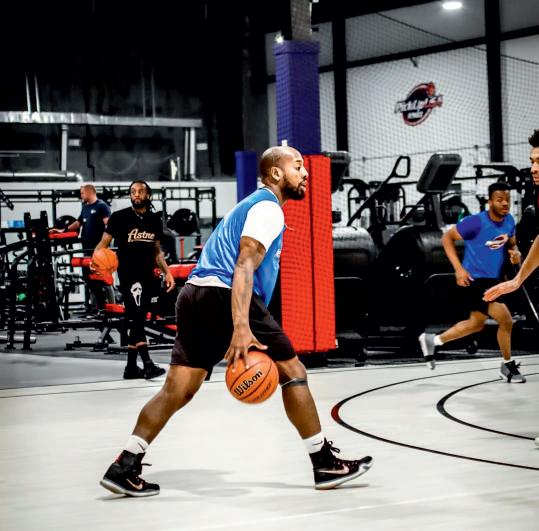
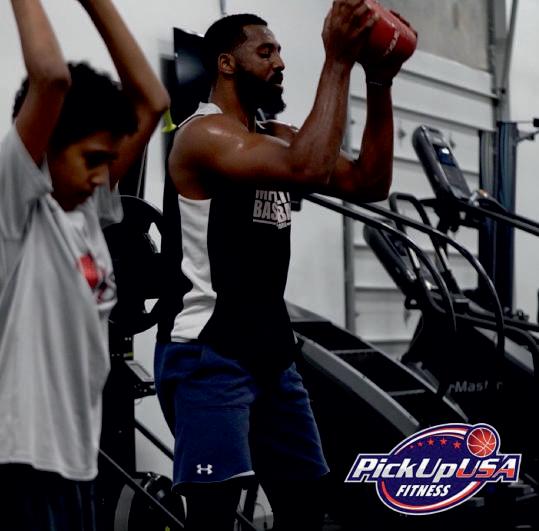
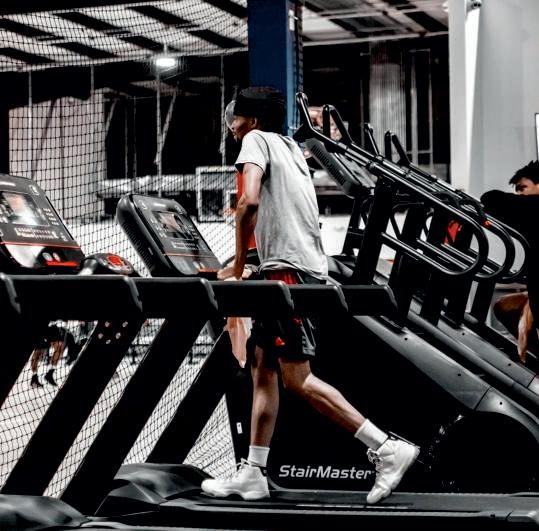
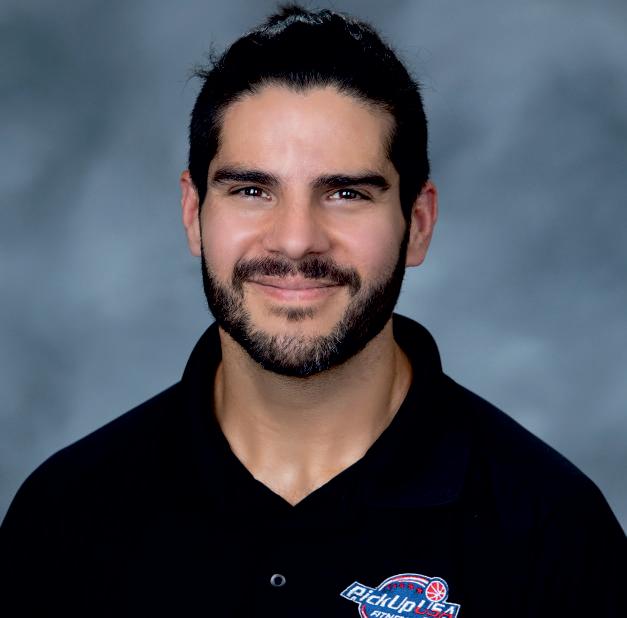
above criticism. Everything, from membership workflows to members-only training modules, has been stress-tested, taken apart,re-assembled,andoptimized,oftenmanytimes.Paolo's definition of innovation isn't just about creating something newbutsometimesbeinganexhaustiveiteration.
PeopleFirst:BuildingCulturesThatOutperform
AtPickUpUSA,cultureisn’tdefinedbymotivationalsloganson a wall. It’s modeled daily through behavior and accountability. Paolo is adamant about this: “Culture is built through systems, consistency,andpeoplewholivethemissioneveryday ”
SpendadayattheIrwindaleprototype,andyou’llfeelthatculture immediately It'stheteamhuddleenergy,thewaythestaffgreet guests,andthewaytheclubrespondstoadversityinthemoment. Thisisnotmerelyaprototypeclub,butabetatestlab.Anything that eventually makes it into the national chain gets tried, refined,andtestedhere.Thatfieldtestingemphasisisoneof the things that helps make PickUp USA's franchise model work.
Butaboveall,andmostsignificantly,whatreallysetsPaoloapart is an appreciation that systems can only go so far without the appropriatepeople.Hehastriedhardtocultivateasoundsystem of leadership development and training. It's not just staff induction; it's creating an ownership and accountability cultureatalllevels.
FranchiseesarenotjustbusinessownerstoPaolo'smind;theyare
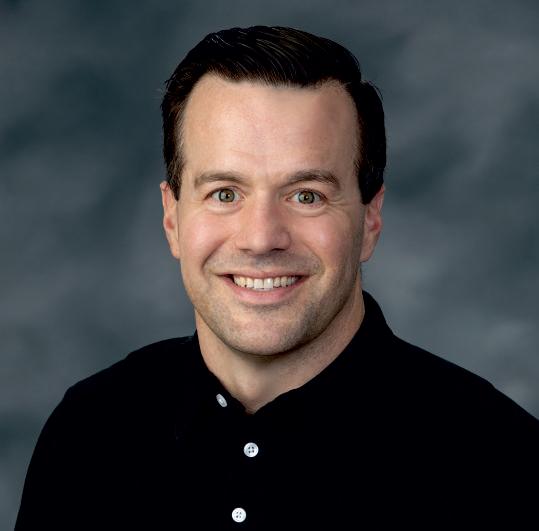
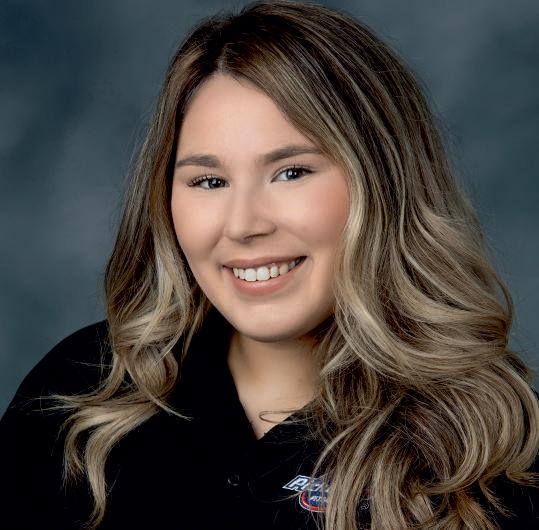
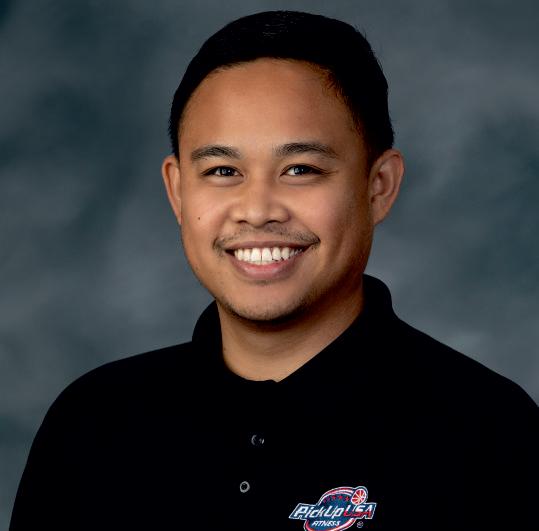
partnersandco-creatorsofthebrand'sfuture.Alotofcredit,he indicates,belongstothemforthesuccessofPickUpUSA."Most ofthecreditgoestoourfranchisees. They put in the work, gave usfeedback,madethechanges,andhelpedusbuildthesystem towhatitistoday,"statesPaolo.
TheBalanceofEmpathyandAccountability
The operation of a growing chain of franchises tends to get theoretical,butPaolotooktheinitiativetostayclosetotheaction. He'stalkingonthephonewiththefranchisees,he'sonthedance floor at the prototype club, and he's in the trenches with the ownersbattlingproblems.
"It doesn't seem lonely to me,"hegoeson "I get energized from thatexchange.Itremindsmeofwhatworksinreality."
Thatopennessformedaclosedloopoffeedbackthatcontinuesto improveitself Franchiseesareheard Theirideasmorelikelythan notleadtooperatinginsightsthatgetincorporatedintothesystem asawhole Thissmallaction-friendliness—listeningcarefully, actingcourageously—isPaolo'sleadershiptrademark.
“Empathy and responsibility are not enemies," is what Paolo believes.Hestates,"Theyaretwosidesofthesamecoin.Youhave tomeetpeoplewheretheyarebutnevercompromiseonanything lessthanthestandard That'showgreatprogressismade."
SimplifyingComplexity:GrowthWithoutCompromise
For every franchisor, the biggest challenge is going big and remainingabletohavequality.PickUpUSA,earlyon,wasalso grapplingwiththatsamequestion: How do you recreate a highend guest experience in multiple markets, without putting too muchcomplexityintothehandsofnewowners?
“I thrive on being in the trenches, solving problems side by side with our people.”

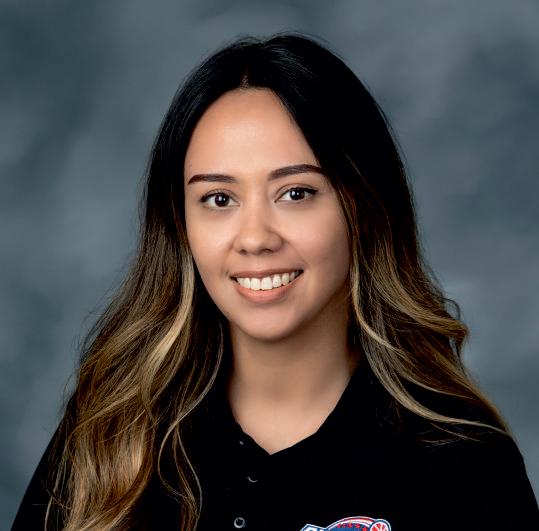

“Empathy and accountability go hand in hand — that’s how real progress happens.”
Paolo's solution was revolutionary simplicity He and his team simplified each process that kept the company afloat, cut out redundancies, and re-built training programs from square one. Theresultisasystemthatreacheshighstandards but at workroom simplicity—a template that any serious franchisee can replicate.
Butwhythesystemworkssowellisthatit'snotonlyalive,it's learning Unlike stagnant books on a shelf, PickUp USA's operations playbook grows with each new day Each club contributestosharedwisdom.Eachnewideaistriedinthefireof real-world application. It's a living thing that learns and improvescontinuously.
ThisspiritofcommunityencapsulatesPaolo'sentirephilosophy thatinnovationhappensinincrements "There'snofinishline, "he says "We do not pursue perfection but aggressively seek progress "
CollaborationattheHeart:AUnifiedLeadershipTeam
Paolo's leadership is also a team-based one. His working partnershipwithJordan,CEOofPickUpUSA,isamasterclassin synergythatstemsfromtrust Thewholeleadershipteamrunsan open-doorpolicy,whereideasaretestedontheirmerits,andnot theirposition.
"It's a very collaborative culture," Paolo says. "No ego, no silos justacommitmenttogettingbettertogether,"headds.
This consistency carries over beyond corporate offices Paolo believes the best input typically comes from the ground up franchiseownersrunningclubsandconsumerssamplingthe
product. He credits such input with allowing PickUp USA to respondpromptlytochangingneedsandcircumstancesinthe marketplace.
BeinginTouch:TheDailyRhythmoftheBusiness
AnordinarydayatPaolo'sjobisanythingbutordinary Theday starts by reading training modules or walking around the prototypefloorobservingemployeesengagingwithoneanother and facilitating employees. Afternoons are spent in strategy sessions, team meetings, and assist calls with franchisees nationwide.
It is not a random rhythm It's a conscious decision to remain grounded in the working rhythm of the company Paolo states, "Leadership occurs in the workflow." "You cannot repair that whichyoucannotobserve.Youneedtostudywhere the pieces of information are rubbing against each other, listen to the individuals nearest to them, and collaborate to build solutions,"headds.
Such a philosophy has built a bond of trust and respect among franchisees across the country They know Paolo's not setting standardsonpaper he'stotheirleft,totheirright,shoulderto shoulder with them, fighting challenges, and succeeding together.
ALegacyofUsefulness:SystemsThatOutlivetheLeader
"I want to be remembered as a guy who made it easier for other people," Paolo responds. "A guy who developed systems that enabled franchisees to succeed, employees to grow, and customers to have a great experience without having to reinventthewheelthemselves,"heshares.
It's a feeling of humility that's complemented with austere discipline AdecadeandahalfintotheexistenceofPickUpUSA, the operating system Paolo has created is peak and still evolving.Witheverynewclub,it'srefinedbysharedexperience of what does and doesn't work, streamlined processes, and relationships forged through years of testing, trial, and adaptation.
The Next Generation Takeaway: Stay Connected, Stay Relevant
For the leaders who will follow him, Paolo's advice is simply elegant: "Stay close to the work. Leadership isn't about being above the grind it's about being connected to it. Know your systems Knowyourpeople Andneverstopimproving what you build."
Headvisestheemergingleadersoftomorrowtostayhumble.He says,“Ifyouwanttolead,startbybeinguseful."
TheRoadAhead:NoFinishLine,OnlyProgress
WhilePickUpUSAFitnessembarksonitssecondchapter,Paolo remains the backroom quiet architect solid, humble, and uncompromisingly committed to transformation. His business plantookwhatcouldhavebeenanothernicheexerciseconcept andturneditintoanationalpowerhousethatfusestoughness withpassion.
Thirteenyearson,Paolocontinuestoseethejourneymanifesting Witheverynewclubthatopens,everyfranchiseewhosucceeds, andeveryyoungprofessionalwhocomesintoretrieveaballinthe PickUpUSAranks,hisvisionremains the same: systems that elevate, people who thrive, and a culture where performance andhumanitycannotbedissociated.
In a firm too often tempted to confuse bigness with greatness, Paolo'staleteachesthatsuccessisbuiltonthehumblepracticeof operational excellence and the unshakeable faith that individualsatalllevelspropelthesystem

Top Business Innovation Trends Shaping the Future
Inthespeed-orientedandnetworkedglobaleconomytoday,
innovation is the new pillar of enduring business success. Withvolatilemarketsandincreasingcustomerexpectations, businesses are being forced to think outside the box. The postpandemic business landscape, fueled by accelerated technologies, changing consumption patterns, and mounting environmentalpressures,isforcingcompaniestore-imaginetheir purpose Companies that treat innovation as an ongoing and intentional process are likely to succeed in a more intricate and competitiveglobalenvironment.
Thisarticleexploresthreekeybusinessinnovationtrendsshaping thefuture,highlightingtechnologicalandconsumershiftsandthe changesneededforresilience,relevance,andsustainablevalue
ArtificialIntelligenceandAutomation
Artificial Intelligence (AI) and automation are reshaping the corporate world, enabling new dimensions of speed, precision, andproductivity.AIisutilizedtoimproveeverythingfromsupply chain management and customer service to marketing, product design, and decision-making AI enables companies to harvest vast amounts of data, determine patterns, and make precise forecasts,enablingthemtopredictcustomerdemand,streamline supply chains, and drive overall performance.Automation, and specifically robotic process automation (RPA), is increasingly employedtoundertakerepetitiveandtime-consumingtaskslike invoicing, payroll, and data entry. It keeps human labor away fromundertakingthesetaskssothattheycanbeutilizedinabovelevelstrategicactivitythatrequiresintellectandimagination.
Inhealthsystems,AIissupportingdiagnosisactivities,allowing physicians to diagnose diseases earlier and more accurately. In finance, automated systems can identify fraud in real-time and enable institutions to make better risk management. AI technologies are now widely accessible to small and mediumsizedenterprisesaswell,notonlytobigcompanies Cloud-based AIservicesarereducingthethresholdofentry,andcompaniesof




allsectorsareeffortlesslyimplementingintelligentsolutionsin their day-to-day lives. But forAI to be fulfilled is only when backedbyacommitmenttowardsbuildingtheworkforce
SustainabilityandGreenInnovation
Sustainability has shifted from a matter of compliance to the forcebehindbusinessinnovation.ESGconsiderationsaremore than ever before shaping strategic choices, since shareholders and stakeholders increasingly expect accountability and responsibilityfrombusinessestheysupport Forward-thinking companiesnowintegratesustainabilityintotheveryessenceof theirbusinessmodelsandseektoinnovateresponsibly Green innovationinvolvesaseriesofpracticessuchastheproduction of energy-efficient technology, clean energy investments, and theadoptionofcirculareconomypractice.Forinstance,firms are creating products that are long-lasting, reused, and recyclablecomparedtotheuseoftheconventionallinearmode ofproductionandconsumption
Firmsareinvestinginsustainablepackaging,cuttingemissions in their supply chain, and carbon offsetting In addition to addressingregulatoryrequirements,sustainablemethodstruly have economic advantages. Increasingly, consumers realize thattheenvironmentisaffectedbywhattheybuyandwillpay more to patronize companies whose values are their own. Companies viewed as leaders in sustainability can achieve increased brand loyalty, better investor relations, and new customers Additionally,governmentsandinstitutionsarenow increasinglyprovidingincentivesaswellasfundingmeansfor greeninitiativessothatnotjustissustainabilityethicallycorrect but also financially beneficial. Over the coming years, companies that do not have environmental factors in their business will be left behind. Climate change, scarcity of resources, and policy pressure will play a growing role in determining the economic agenda, and companies have to movefasttofuture-prooftheircompanies.
ExperienceEconomyandPersonalization
As digital disruption rebirths industries, customers will no longer accept one-size-fits-all. The rise of the experience
economy is a sea change in how value is conceived and achieved.Nowcustomerscravericher,memorableexperiences andrequirebrandstoprovidepersonalizedinteractionatevery pointofcontact Companiesacrossvarioussectorsareinvesting in technologies and initiatives that improve the customer experience From engaging e-commerce sites to engaging instore experiences and personalized service deliveries, the emphasis is on building emotional connections and sustained loyalty. Retailers, for example, are employing augmented reality so that customers can try on products virtually, while hotels are delivering personalized room stays depending on preferenceandhistory
Personalization,drivenbydataanalytics,artificialintelligence, and customer relationship management software, enables companies to offer more targeted offerings. By interrogating customer data like purchase history, navigation patterns, and demographics, companies are able to recommend goods, optimizemarketingmessages,anddeliverdifferentiatedservice experiences Personalizationisnotjustrestrictedtoconsumer businesses Client-centric engagement models in B2B sectors are enabling companies to build richer relationships and improvecustomers'lifetimevalue
Conclusion
As international business becomes more interconnected, competitive,andadaptive,innovationisnolongerachoice Itis thebasisonwhichthefutureachievementswillbeconstructed The integration of automation and artificial intelligence is forging new efficiencies and disrupting conventional workflows. Simultaneously, green innovation is enabling businesses to thrive at reconciling profitability with sustainability. Additionally, expanding needs for experience economy and customization are reshaping how organizations interactwithcustomersandgeneratevalue Organizationsneed to pledge themselves to create a constantly forward-thinking and adaptable mindset Leadership needs to adopt innovation notjustasapathtogrowthbutasadriverofvaluethatguides everybusinessstrategy.






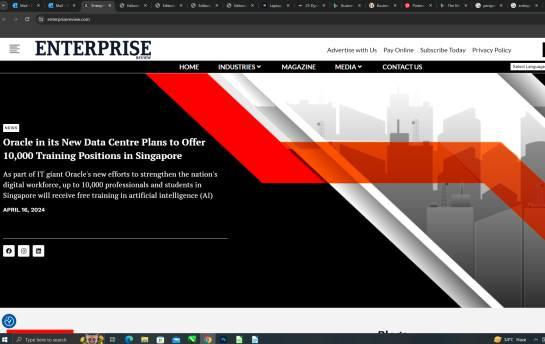
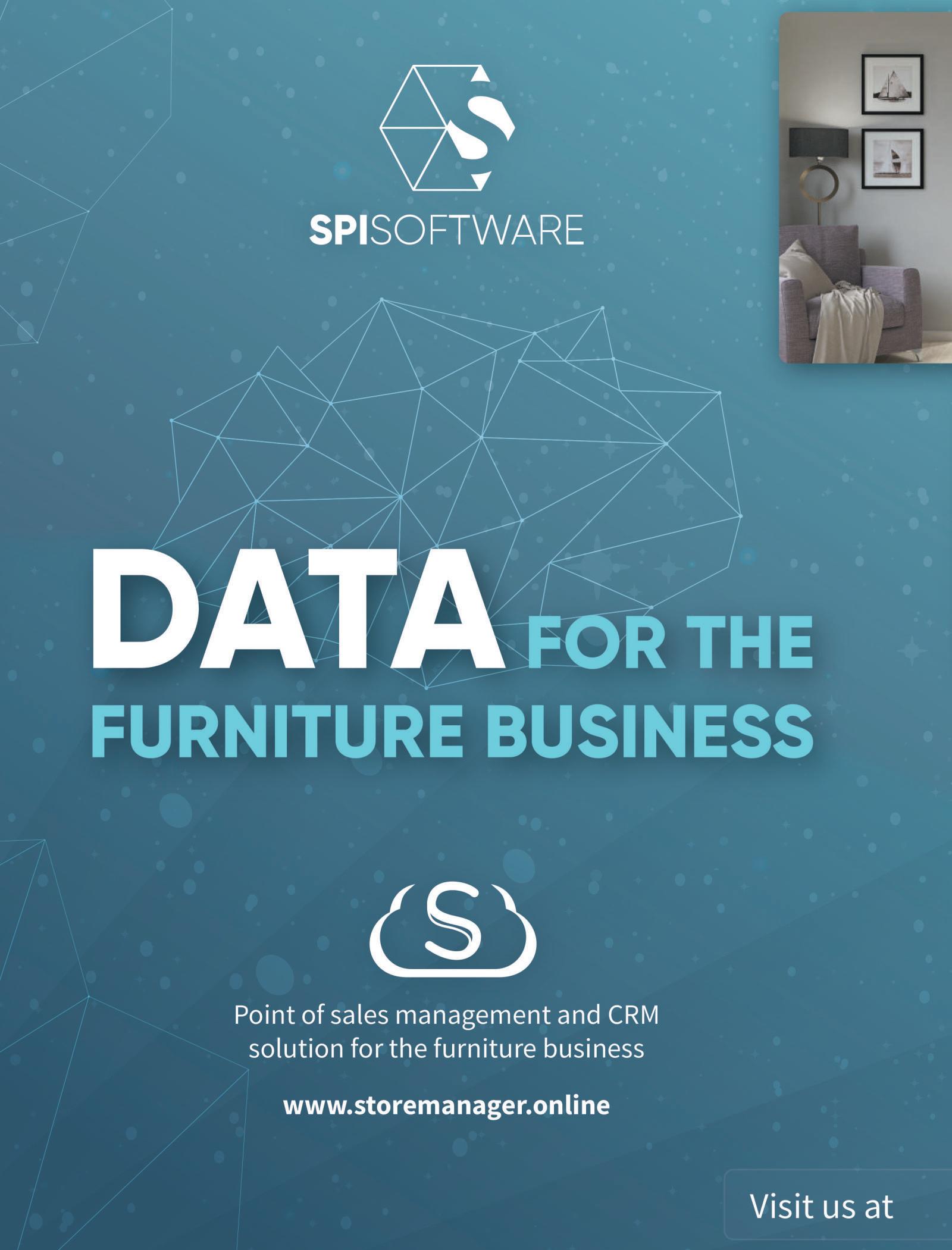






NavigatingChangewithStrategic Transformation Strategies
In today’s fast-paced and ever-evolving business
landscape, organizations face unprecedented challenges that require more than traditional management approaches Marketdynamicsshiftrapidlyduetotechnological advancements, global competition, regulatory changes, and shiftingconsumerexpectations.Tonotonlysurvivebutthrive in this environment, organizations must embrace strategic transformation strategies These strategies involve comprehensive, forward-looking changes that realign an organization's core operations, culture, and value delivery mechanisms Navigating change through strategic transformationallowsbusinessestostaycompetitive,innovate continuously, and seize emerging opportunities amid uncertainty.
Understanding the Imperative for Strategic Transformation
Thecontemporarybusinessecosystemismarkedbyvolatility, uncertainty, complexity, and ambiguity often referred to as VUCA. These factors force organizations to rethink their strategiesandoperationalmodelscontinually.Theriseofdigital technologieshasaccelerateddisruptionacrossindustries,from retailandfinancetomanufacturingandhealthcare Established companies encounter new entrants leveraging innovative technologies like artificial intelligence, cloud computing, and blockchain to capture market share swiftly In this context, strategic transformation is not merely a reaction to external pressures but a proactive journey toward future-proofing the organization. Strategic transformation fundamentally differs from incremental improvements or change management. It involves a holistic reimagining of the organization’s vision, mission, structure, business processes, and organizational culture.
Leaders must envision where the company needs to be in the futureandidentifythecapabilitiesrequiredtogetthere.

This vision acts as the guiding star for all transformation initiatives,ensuringcoherenceandalignmentacrossalllevels of the organization Without a clear and compelling vision, transformationeffortsriskbecomingdisjointed,whichcanlead to wasted resources and diminished employee morale Moreover, transformation strategies help organizations to create sustainable competitive advantages By aligning innovation, operational efficiency, and customer-centricity, companiescanunlocknewrevenuestreams,improvecustomer experiences,andenhanceoverallresilience.
KeyComponentsofEffectiveTransformationStrategies
Successful strategic transformation depends on several foundational components that ensure initiatives deliver intended outcomes. The first critical element is stakeholder engagement. Transformation inherently impacts various stakeholders, including employees, management, customers, suppliers,andinvestors Theirsupportandactiveparticipation areessentialtoovercomingresistanceanddrivingmomentum
Transparent communication that articulates the rationale, benefits, and impact of the transformation fosters trust and sharedownership Involvingstakeholdersearlyandfrequently in decision-making processes enhances buy-in and reduces friction.
Secondly, organizations must leverage data and analytics to inform their transformation roadmap Data-driven decisionmakingenablescompaniestoidentifyinefficiencies,anticipate markettrends,andunderstandcustomerbehaviorwithgreater precision. Analytics provide the evidence base to prioritize initiatives,allocateresourceseffectively,andmeasureprogress against defined KPIs.This reduces reliance on intuition alone and increases the likelihood of achieving measurable results. Anothercornerstoneofsuccessfultransformationiscultivating organizational agility Agile principles, originally rooted in softwaredevelopment,havebeenwidelyadoptedasameans to enhance flexibility and responsiveness Agile transformationenablesteamstoworkiteratively,incorporate feedback quickly, and adapt to changing circumstances without losing sight of the overall strategic objectives. Cultivating a culture of continuous learning and experimentation empowers employees to innovate and contribute to the transformation actively Leadership commitment is equally crucial. Transformational change often requires challenging the status quo, reallocating resources,andmakingdifficultdecisions.
OvercomingChallengesintheTransformationJourney
While strategic transformation offers the potential for significant gains, the path is fraught with challenges that can derail progress One of the most persistent obstacles is resistancetochange,whichoftenstemsfromfear,uncertainty, andperceivedlossofcontrol Employeesmayworryaboutjob security, shifts in responsibilities, or adapting to new technologies. Effective change management strategies are essential to address these concerns. This includes clear and empathetic communication, providing training and development opportunities, and involving employees in shaping the transformation process. Frameworks such as Kotter’s8-StepChangeModelortheADKARmethodology provide structured approaches to managing resistance and fosteringengagement.
Anothercommonpitfallisthemisalignmentoftransformation initiatives with the organization’s broader strategic goals Without a clear linkage between transformation projects and businessobjectives,effortscanbecomefragmented,competing for resources without delivering cohesive results To mitigate this, organizations must establish governance structures that oversee transformation initiatives, ensuring they remain aligned with strategic priorities. Regular monitoring through dashboards and performance metrics allows leaders to track progress, identify bottlenecks, and recalibrate plans promptly Additionally, the complexity of transformation efforts can overwhelmorganizationsifnotmanagedproperly Balancing day-to-dayoperationaldemandswhileimplementingchange requires careful planning and prioritization. Overloading teams with multiple simultaneous initiatives can lead to burnoutanddecreasedproductivity.
Conclusion
Strategic transformation is a critical imperative for organizations aiming to remain relevant and competitive in today’s rapidly evolving marketplace. By understanding the need for transformation, focusing on key components like stakeholder engagement, data-driven decision-making, and agility,andproactivelyaddressingchallengessuchasresistance and alignment issues, businesses can navigate change more effectively Ultimately,strategictransformationisnotjustabout managing change but about shaping the future through intentional, aligned, and sustainable initiatives that empower organizationstothriveamiddisruption.



www.enterprisereviewmedia.com

